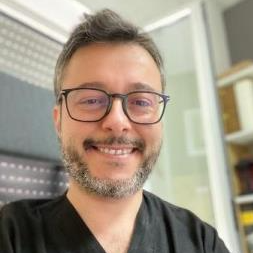Advances in Restorative Dentistry: Materials and Computerized Technologies
A special issue of Applied Sciences (ISSN 2076-3417). This special issue belongs to the section "Applied Dentistry and Oral Sciences".
Deadline for manuscript submissions: closed (20 March 2023) | Viewed by 2859
Special Issue Editors
Interests: orthodontics; occlusion; dental anatomy; prosthetic dentistry; restorative dentistry; adhesion; biomaterials
Special Issues, Collections and Topics in MDPI journals
Interests: biomaterials; oral surgery; implantology; oral pathology; prosthodontics; bioengineering
Special Issues, Collections and Topics in MDPI journals
Special Issue Information
Dear Colleagues,
This Special Issue aims to investigate the current available state of the art in Restorative Dentistry and new dental technologies, both from researchers and clinicians’ points of view.
This Special Issue covers a variety of areas of Restorative Dentistry as below, but not limited to these. First of all, the indirect restorative manufact could be revealed by an intraoral scanner instead of the traditional dental impression. Dental technician could prepare the manufact digitally and then print. 3D printer also offers the possibility to make more than one proof, before preparing the definitive one, in order to deliver the best outcome to the patients.
Nowadays new materials currently available give a chance to have a final product that is similar to the original tooth, both for aesthetics and mechanical proprieties: this is the other aspect for which this special issue welcomes contributions.
Dr. Sergio Sambataro
Prof. Dr. Gabriele Cervino
Guest Editors
Manuscript Submission Information
Manuscripts should be submitted online at www.mdpi.com by registering and logging in to this website. Once you are registered, click here to go to the submission form. Manuscripts can be submitted until the deadline. All submissions that pass pre-check are peer-reviewed. Accepted papers will be published continuously in the journal (as soon as accepted) and will be listed together on the special issue website. Research articles, review articles as well as short communications are invited. For planned papers, a title and short abstract (about 100 words) can be sent to the Editorial Office for announcement on this website.
Submitted manuscripts should not have been published previously, nor be under consideration for publication elsewhere (except conference proceedings papers). All manuscripts are thoroughly refereed through a single-blind peer-review process. A guide for authors and other relevant information for submission of manuscripts is available on the Instructions for Authors page. Applied Sciences is an international peer-reviewed open access semimonthly journal published by MDPI.
Please visit the Instructions for Authors page before submitting a manuscript. The Article Processing Charge (APC) for publication in this open access journal is 2400 CHF (Swiss Francs). Submitted papers should be well formatted and use good English. Authors may use MDPI's English editing service prior to publication or during author revisions.






